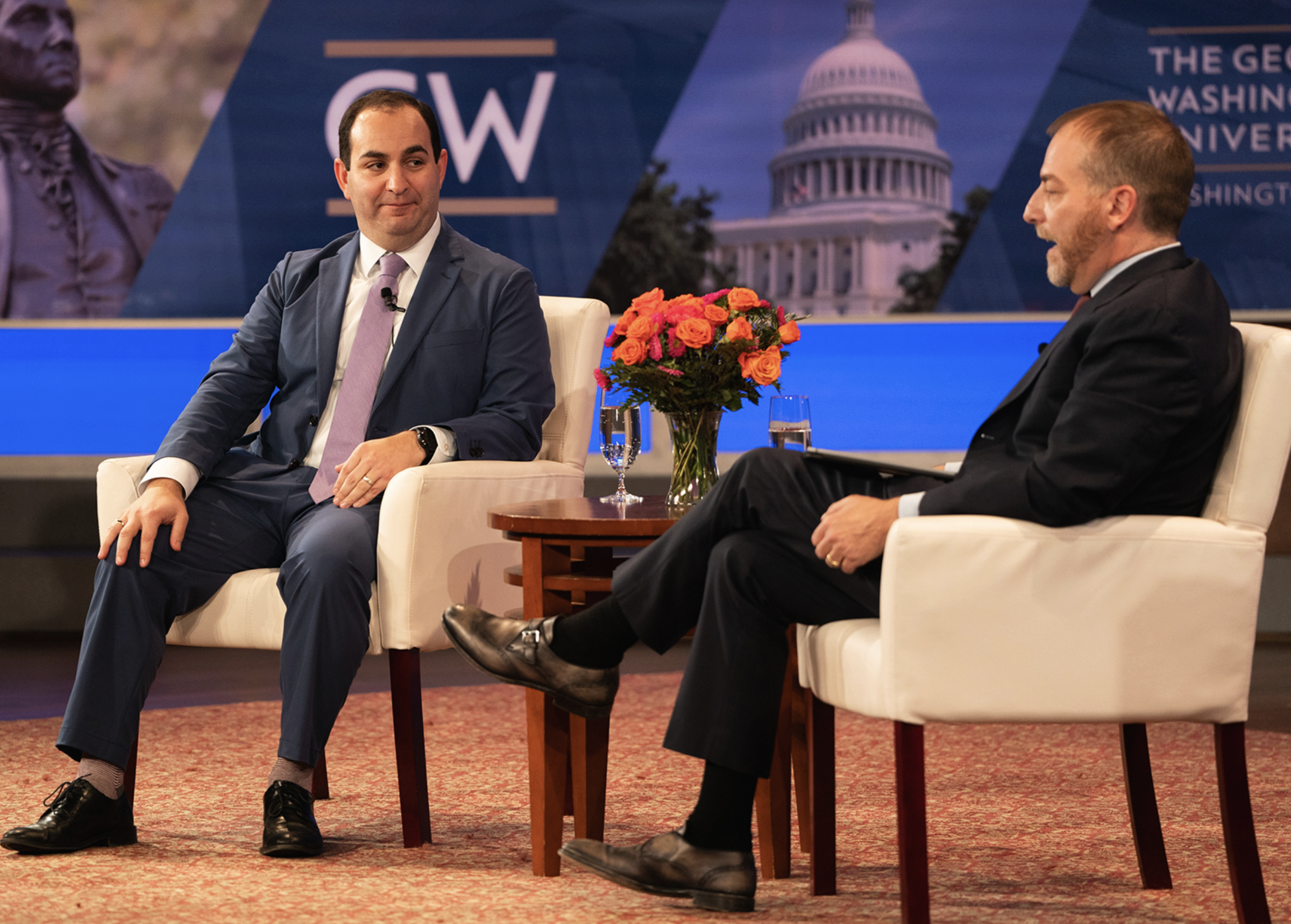Sharon Ann Murphy, the author of “Banking on Slavery: Financing Southern Expansion in the Antebellum United States" (University of Chicago Press, 2023), led a discussion at George Washington University explaining how deeply 19th-century banks in the American South were entwined with the institution of slavery.
The discussion, hosted by the GW Business Dean’s Diversity Council, was held on Wednesday afternoon in Duques Hall. Arthur Wilson, an associate professor of finance at GW, introduced Murphy.
Wilson said he invited Murphy to speak because when he first read her work, he was shocked by what he learned.
“I was appalled by the profound brutality of literally treating humans like livestock. Understand, when the borrower defaulted, slave auctions often followed,” Wilson said. “Through no fault of their own, the enslaved people might be literally sold down the river, never to see friends or family again. I knew slavery was evil, but this took my breath away.”
He said he wanted more people to hear the findings of Murphy’s research.
Murphy is chair of the Department of History and Classics at Providence College and an expert on early American finance.
She said when she began her research for the book, she specifically wanted to focus on the way that southern commercial banks directly, knowingly and explicitly interacted with the slave system.
“Although for this project, I did attempt to examine the role of Northern commercial banks in the financing of slavery, their direct role was pretty insignificant for the types of financial relationships I was examining,” Murphy said.
Murphy explained in the 19th century, the most common type of lending by commercial banks was called discounting, which was a specific type of short-term loan for business people engaged in trade.
“A merchant would obtain goods from a seller by issuing a promissory note, often referred to as a commercial paper, promising to pay the full amount at a future date. The seller could then take that note to the bank to be discounted and the bank would loan the face value of the note,” Murphy said.
Bankers believed that discounting was the safest type of loan because the loans were backed by real commodities, i.e., goods and transit items awaiting sale. Also, the loans were short term, usually only 30 to 60 days in length, and they were self-liquidating, meaning that as soon as that sale was completed, the note would be repaid.
If the debtors failed to repay their discount loan, the bank could sue the debtor and or any of the endorsers on that note for repayment and the court would issue an order of fieri facias, which allowed sheriffs to seize and sell the property of the debtor or any of the endorsers in payment of the delinquent obligations.
“It was as part of these fieri facias judgments that early banks first started engaging directly with human property,” Murphy said. “Southern banks willingly seized and sold enslaved people as part of these foreclosure proceedings.”
If a debtor wished to renew a discount loan, banks would ask for additional security to secure that loan. Most bank charters allowed the institution to hold property in mortgage if it was used to secure one of the existing debts.
“In the South, banks regularly accepted enslaved people as mortgage collateral for the securitization of existing short-term loans,” Murphy said.
Most banks kept those rules throughout the antebellum period.
During the post-War of 1812 boom, as average slave prices increased, southern frontier banks in the growing states of Kentucky, Tennessee, Mississippi and Louisiana became increasingly comfortable with actively treating enslaved people as financial assets, even as traditional banking norms continued to constrain their support of westward expansion.
A few banks, mainly the ones operating on the southern frontier, began allowing businessmen to accumulate increasingly large debts by discounting business notes and then repeatedly renewing the notes using land and enslaved individuals as collateral.
“The largely positive experiences that both the debtors and the banks had with these mortgage contracts...convinced frontier bankers that enslaved lives were not only acceptable, but they were superior assets to use,” Murphy said. “Thus, during the 1820s and ’30s bankers operating on the frontier were increasingly willing to initiate long-term loans secured by enslaved individuals.”
In 1837, a financial panic led to a general economic depression that lasted until 1843. During the depression, frontier banks, after investing in plantations and slave lives in the 1830s, helped prop up the system of slavery by serving as a financial safety net for slave owners.
In the 1840s, Southern banks faced challenges related to the long-term contracts they were extending. There were greater instances of fraud and foreclosure lawsuits. When banks moved to foreclose on certain debtors, they sold enslaved communities on the plantations.
“When they did sell, the enslaved communities on these plantations were often devastated as the people were sold in small blocks to the highest bidder,” Murphy said.
Murphy cited as an example a transaction with the Bank of Alabama in 1842 in which a widow mortgaged her land and about 30 enslaved people to the Mobile branch of the bank. The widow had a debt of about $28,000, which would be just over $1 million today.
When the widow failed to repay her debt, the bank put the property into foreclosure. Over time, the bank gradually sold all the enslaved individuals. One slave owner purchased 19-year-old Serena and her child for $700 in April of 1948. In May, another buyer acquired 18-year-old Barbara for $550, while 28-year-old John was sold for $725.
The challenges stemming from the long-term contracts and leniency the banks showed slave owners eventually led to the demise of many banks, Murphy explained.
“The willingness of banks to embrace long-term mortgages on land and human property and their leniency toward many delinquent slaveholders during the depression itself ultimately led to the failure of a large percentage of these banks, particularly in the frontier South,” Murphy said. “In effect, many frontier banks sacrificed themselves at the altar of the slave system. Banks on the southern frontier had fulfilled a specific need during a crucial moment in the expansion of the slave system and then they retreated to the background.”





